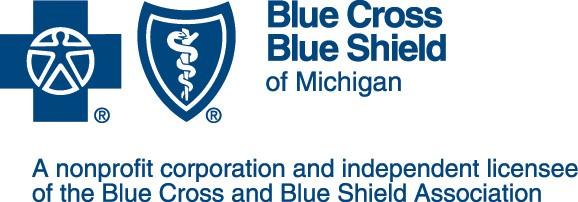NEWS & EVENTS
SPECIALTY CARE
Authored by: Jonathan G. Gabison, MD, Kara Mizokami-Stout, MD, MSc, Heidi L. Diez, PharmD, BCACP, Lauren D. Oshman, MD, MPH, FAAFP.
TAKE AWAY POINTS:
- Medullary thyroid cancer is rare. Screen patients for personal or family history before prescribing GLP-1 RA’s.
- The benefits of GLP-1 RA’s on cardiovascular health may outweigh any small increase in absolute risk of thyroid cancer. Share decision-making with patients.
Introduction
Health care professionals are increasingly using GLP-1 RAs (glucagon-like peptide 1 receptor agonists) as a treatment for type 2 diabetes. Not only are GLP-1 RAs beneficial for glucose lowering, newer medications in this class such as semaglutide, liraglutide and dulaglutide have been shown to improve cardiovascular outcomes and treat obesity in patients with diabetes (El Sayed).
While GLP-1 RA’s have very few contraindications, this class carries a black box warning because of the risk of thyroid C cell tumors seen in rodent studies. Diabetes and obesity both increase the risk of thyroid cancer. (Vigneri, Ashebrook, Avgerinos) Originating from the parafollicular C cells, medullary thyroid carcinoma (MTC) makes up only 1-2% of primary thyroid malignancies, with an incidence of less than 1 in 100,000. (Kitihara) While most are sporadic, about 20% are hereditary, including multiple endocrine neoplasia (MEN2A and 2B). (Sherman) MTC typically presents with a thyroid nodule and elevated levels of calcitonin. (Tuttle) A recent 2023 study generated a wave of headlines when media reports warning of an increased risk of thyroid cancer in humans using GLP-1 RAs, raising many questions from patients and their treatment teams.
Study Analysis
This nested case control study by Bezin and colleagues, which included 2,562 cases exposed to GLP-1 RA and 45,184 matched controls, studied the association of GLP-1 RA’s with risk of thyroid cancer. (Bezin) Using the French health care insurance database (SNDS), the study enrolled adults with type 2 diabetes prescribed a GLP-1 RA, a DPP-4 inhibitor, or other oral medications (metformin, sulfonylureas, etc.). Exposure was defined as receiving at least three short-term or two long-term prescriptions of any dose of the medications within a one-year period between 2006 and 2018. Patients were excluded if they had less than eight years of data before thyroid cancer diagnosis, a history of other cancer or radiotherapy, or recent history of pregnancy, or using insulin.
The outcome measure was a new diagnosis of thyroid cancer documented on hospital discharge records between 2014 and 2018. Median age at cancer diagnosis was 64 years and 67% were female. In adjusted analysis, risk of all thyroid cancer was associated with current use of GLP-1 RA (HR 1.46, 95% CI 1.23-1.74), cumulative use from 1-3 years (HR 1.58, 95% CI 1.27-1.95) and cumulative use over 3 years (HR 1.36, 95% CI 1.05-1.74). The risk of medullary thyroid cancer was higher only in current users (HR 1.76, 95% CI 1.16-2.69) and cumulative use of 1-3 years (HR 1.78, 95% CI 1.04-3.05). The strengths of the study included the use of a robust database of in an attempt to address possible confounders. Limitations included the lack of controlling for obesity as a confounder and the use of elevated calcitonin levels and other proxy measures as a proxy for the diagnosis of medullary thyroid cancer (Bezin).
The Bezin study was consistent with a recent meta-analysis of randomized clinical trials by Hu and colleagues. (Hu) This sub-analysis included 77,483 patients enrolled in 35 RCTs of GLP-1 RA’s compared to placebo and followed for 26-360 week. The main outcome was thyroid cancer as reported as an adverse event in each clinical trial’s registry and found a similar effect size that lacked statistical significance (RR 1.30, 95% CI 0.86-1.97). The strengths of this meta-analysis are inclusion of multiple RCTs. Limitations include the highly selective patient selection criteria for the initial RCTs, using adverse event reporting to identify cases of thyroid cancer, the lack of reporting on medullary thyroid cancer, and the risk of reporting bias as not all thyroid cancer cancers may have been reported in the time frame of the RCTs.
Putting the Findings into Context
Although we do not fully understand the possible relationship between GLP-1 RA’s and thyroid cancer, liraglutide activated parafollicular C cell hyperplasia and increased calcitonin release in pre-clinical studies in rats. (Bjerre). Because the human thyroid gland has far fewer C cells than rats and MTC is rare, primary care physicians are unlikely to see medullary thyroid cancer in our clinical practices. A case-control study like Bezin may have been able to show a ‘statistically significant' result that a meta-analysis of RCT’s like Hu would not. (Thompson) Putting these study findings into context, it may be that as health care providers prescribe more GLP-1 RA’s, we are also more vigilant to look for any thyroid cancer, including the far more common differentiated thyroid cancers such as papillary and follicular thyroid cancers A recent study estimated that 60-90% of all thyroid cancers are over-diagnosed due to incidental thyroid cancers identified on ultrasound, CT and MRI performed for unrelated indications, and that these cancers are likely differentiated, low risk, and do not require treatment. (Li) The Bezin study unfortunately did not report on the clinical significance of the thyroid cancers found. (Pappa). Multiple randomized controlled studies to date have addressed GLP-1 RA’s positive effects on diabetes and cardiovascular outcomes. Placing the risk of thyroid cancer into context, clinicians who treat type 2 diabetes should screen patients for personal and family history of medullary thyroid cancer and multiple endocrine neoplasia type 2 syndrome prior to prescribing GLP-1 RA’s and use shared decision making and patient education to ensure patients are informed about the overall risks and benefits of their treatment.
References
- Nuha A. ElSayed, Grazia Aleppo, Vanita R. Aroda, Raveendhara R. Bannuru, Florence M. Brown, Dennis Bruemmer, Billy S. Collins, Marisa E. Hilliard, Diana Isaacs, Eric L. Johnson, Scott Kahan, Kamlesh Khunti, Jose Leon, Sarah K. Lyons, Mary Lou Perry, Priya Prahalad, Richard E. Pratley, Jane Jeffrie Seley, Robert C. Stanton, Robert A. Gabbay; on behalf of the American Diabetes Association, 9. Pharmacologic Approaches to Glycemic Treatment: Standards of Care in Diabetes—2023. Diabetes Care. 1 January 2023; 46 (Supplement_1): S140–S157.
- Vigneri P, Frasca F, Sciacca L, Pandini G, Vigneri R. Diabetes and Cancer. Endocr Relat Cancer (2009) 16(4):1103–23. doi: 10.1677/ERC-09-00871677/erc-09-0087
- Aschebrook-Kilfoy B, Sabra MM, Brenner A, Moore SC, Ron E, Schatzkin A, et al. Diabetes and Thyroid Cancer Risk in the National Institutes of Health-AARP Diet and Health Study. Thyroid (2011) 21(9):957–63. doi: 10.1089/thy.2010.0396
- Avgerinos KI, Spyrou N, Mantzoros CS, Dalamaga M. Obesity and Cancer Risk: Emerging Biological Mechanisms and Perspectives. Metabolism (2019) 92:121–35. doi: 10.1016/j.metabol.2018.11.001
- Kitahara, C., Sosa, J. The changing incidence of thyroid cancer. Nat Rev Endocrinol 12, 646–653 (2016). https://doi.org/10.1038/nrendo.2016.110
- Sherman SI, Kloos RT, Tuttle RM, et al. No calcitonin change in a person taking dulaglutide diagnosed with pre-existing medullary thyroid cancer. Diabet Med. 2018;35(3):381-385. doi:10.1111/dme.13437
- Up To Date. Tuttle M. Medullary thyroid cancer: Clinical manifestations, diagnosis, and staging
- Bezin J, Gouverneur A, Pénichon M, Mathieu C, Garrel R, Hillaire-Buys D, Pariente A, Faillie JL. GLP-1 Receptor Agonists and the Risk of Thyroid Cancer. Diabetes Care. 2023 Feb 1;46(2):384-390. doi: 10.2337/dc22-1148. PMID: 36356111.
- Hu, Weiting, et al. "Use of GLP-1 receptor agonists and occurrence of thyroid disorders: a meta-analysis of randomized controlled trials." Frontiers in Endocrinology 13 (2022).
- Bjerre Knudsen L, Madsen LW, Andersen S, Almholt K, de Boer AS, Drucker DJ, et al. Glucagon-Like Peptide-1 Receptor Agonists Activate Rodent Thyroid C-Cells Causing Calcitonin Release and C-Cell Proliferation. Endocrinology (2010) 151(4):1473–86. doi: 10.1210/en.2009-1272
- Li M et al 2021 Mapping over-diagnosis of thyroid cancer in China. Lancet Diabetes Endocrinol 9:330-332. PMID: 33891886.
- Thompson, Caroline A., and Til Stürmer. "Putting GLP-1 RAs and Thyroid Cancer in Context: Additional Evidence and Remaining Doubts." Diabetes Care 46.2 (2023): 249.
- Pappa, T. “GLP-1 Receptor Agonists and the Risk of Thyroid Cancer.” Clinical Thyroidology (2023):35:18-20.



